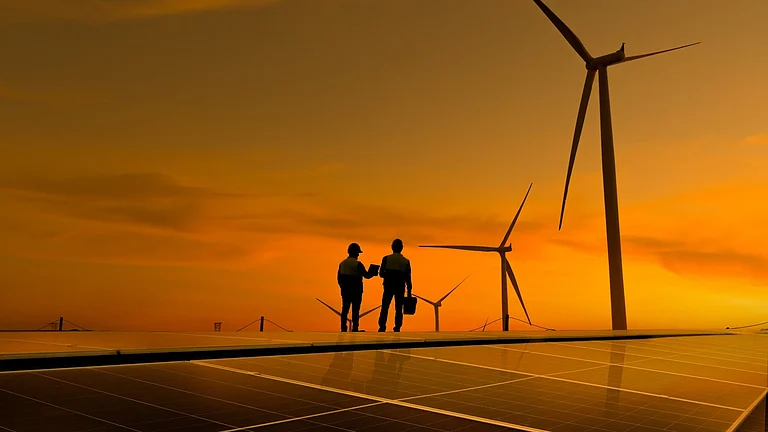India could add 6–7 GW of wind capacity in 2025, the highest ever, up from 3.42 GW in 2024, with domestic manufacturing and exports set to expand.
India’s wind sector is globally competitive, with potential to supply 10% of global demand by 2030
Developers are being encouraged to install weather stations to share real-time data with IMD, which will improve accuracy in wind and solar forecasting.
Wind Sails High: India to Add Record 6–7 GW in 2025, Says MNRE Secretary
In 2024, India added only 3.42 GW of wind capacity, but momentum is set to accelerate in 2025, with domestic wind turbine manufacturing also expected to rise, said the MNRE Secretary
This year could be the best year in terms of wind capacity addition, said Santosh Kumar Sarangi, Secretary, Ministry of New and Renewable Energy at the launch of the report titled Wind at the Core: Driving India’s Green Ambitions and International Influence on August 26.
He said, “In the current year, if everything goes well, we should be looking upwards of 6–7 GW of installation which will be an all-time high. But for that to happen we want industry leaders like Suzlon and others to play a proactive role.”
Last year, only 3.42 GW of wind energy capacity was added. Sarangi said that the past few years saw a dip in installed capacity addition due to multiple reasons including a decline in prices of imported turbines. “Recently, domestic manufacturing has picked up with facilitating role played by the states and MNRE. Our domestic manufacturing will reach a scale where it will be in a position to export in addition to meeting the domestic demand,” he added.
The industry exported close to 3 GW of wind equipments, last year. Girish Tanti, vice chairman of Suzlon, said, “It is still minuscule but it has potential to grow quickly to about 10% of the global demand by 2030.”
The report, released by the Global Wind Energy Council India and MEC+, finds that India’s installed wind capacity can be doubled to 107GW by 2030.
In terms of the product, technology, performance and price points, India’s wind energy sector is globally competitive, said Tanti. Unlike solar, it has had an early lead of 30 years. “We are getting natural demand from global players. Many of them have also set up manufacturing facilities in India to export to their markets,” Tanti added.
On offshore wind energy, Sarangi said, “Offshore projects tend to be expensive due to undersea cable installations of 30–40 metres in deep waters, making them commercially unviable without viability gap funding (VGF).”
SECI’s first offshore bidding was for 1 GW pilot project, 500 MW each in Gujarat and Tamil Nadu. Earlier this month, tender for offshore project in Gujarat was cancelled due to lack of response from developers. Secretary informed that a LiDAR (Light Detection and Ranging) survey is ongoing in an identified area in Tamil Nadu which will be completed in December this year. “A bid for Tamil Nadu coast is expected around January or February, and once that is finalised we will get to know the pathway for offshore wind,” he said.
Government had committed a VGF of about Rs 7,000 crore for offshore wind projects. “Almost 50% CUF is expected at the Tamil Nadu coast. We will continue to work with the Tamil Nadu government and the industry to ensure that the first offshore wind project is set up in India,” Sarangi said.
He also mentioned that the solar and wind project developers are being encouraged to install weather stations at the project site to transmit real-time data to nearby IMD stations. With wider adoption, this will significantly improve forecasting accuracy, he said.
